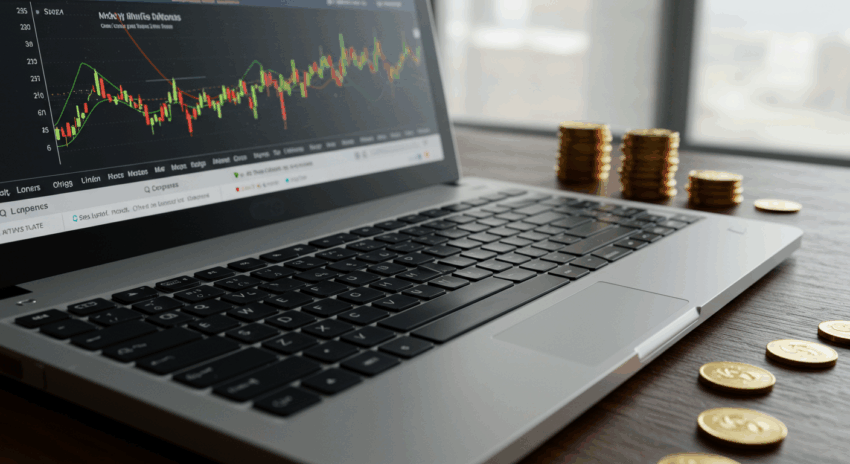The latest U.S. inflation data for May 2024 has just been released, and it’s a mixed bag of encouraging news and cautious realities that directly impacts your wallet, from your grocery bill to your mortgage rate. If you’ve been feeling the squeeze of rising prices and wondering when relief might finally arrive, this latest report offers some crucial clues. We’re going to break down exactly what these new numbers mean, how the Federal Reserve is reacting, and most importantly, what it signals for your personal finances in the months ahead.
This isn’t just another dry economic report; it’s a key piece of the puzzle that helps determine the cost of borrowing money, the returns on your savings, and the overall health of the job market. Understanding this information is essential for making informed financial decisions. For the latest updates on economic trends, you can always check our news section.
Dissecting the May Inflation Numbers: A Welcome Cooldown
First, let’s look at the headline news. The Consumer Price Index (CPI), the most widely followed measure of inflation, showed a significant cooling in May. But what exactly is the CPI? Imagine a giant shopping basket filled with goods and services that the average American household buys—things like gasoline, groceries, rent, clothing, and medical care. The CPI tracks the change in the total price of this basket from one month to the next.
Here are the key figures from the May 2024 report:
- Month-over-Month Inflation: The CPI was flat, showing 0.0% change from April to May. This is a big deal because it means, on average, prices did not increase at all during the month. This was better than the small increase economists were expecting.
- Annual Inflation: Over the last 12 months, prices increased by 3.3%. This is a welcome decrease from the 3.4% annual rate reported in April. While it’s still above the Federal Reserve’s 2% target, the downward trend is a positive sign.
Economists also pay close attention to core inflation. This is the change in prices for everything in the shopping basket except for food and energy. Why exclude them? Because food and gas prices can be very volatile, swinging wildly due to weather, global events, or seasonal demand. Core inflation gives a clearer picture of the underlying inflation trend. In May, core inflation also showed progress, rising just 0.2% for the month and 3.4% for the year—the slowest annual pace in over three years.
The Federal Reserve’s Response: Tapping the Brakes on Rate Cuts
With such positive news on inflation, you might expect the Federal Reserve—the U.S. central bank responsible for managing inflation—to immediately start cutting interest rates to make borrowing cheaper. However, on the very same day the CPI data was released, the Fed announced it was holding its key interest rate steady in the 5.25% to 5.50% range, where it has been since last summer.
Why the caution? The Fed’s job is a delicate balancing act. They have a dual mandate: to keep prices stable (low inflation) and to maintain maximum employment. While the May inflation report was excellent, it is still just one month of data. The Fed wants to see a sustained trend of inflation moving back down to their 2% target before they feel confident enough to cut rates. Cutting too soon could risk reigniting inflation, which would be even more damaging to the economy in the long run.

Even more revealing was the Fed’s updated economic projections. Officials released their famous “dot plot,” which is an anonymous survey showing where each Fed board member expects interest rates to be in the future. The latest plot shows a significant shift:
- In March, the consensus was for three interest rate cuts in 2024.
- Now, the median projection is for just one single rate cut this year.
This signals that the central bank, while encouraged by the recent data, believes the fight against inflation isn’t over. They are forecasting that interest rates will remain higher for longer than many had hoped.
What This Means for Your Money
This combination of cooling inflation and a cautious Fed has direct, real-world consequences for your household budget and financial planning. Let’s break down the impact on different areas of your life.
For Borrowers: Continued High Costs
If you’re looking to buy a house, purchase a car, or are carrying a balance on your credit cards, the Fed’s decision to hold rates high means borrowing will remain expensive. Mortgage rates, which are indirectly influenced by the Fed’s policy, are likely to stay elevated. The same goes for auto loans and credit card APRs, which are more directly tied to the Fed’s key rate. The dream of significantly lower loan payments has been pushed further into the future.
For Savers: A Silver Lining
There’s a bright side to high interest rates. If you have money in a high-yield savings account, money market account, or Certificates of Deposit (CDs), you will continue to earn attractive returns. The current rate environment is a great opportunity to grow your emergency fund or other short-term savings. This is a key part of a healthy approach to savings and building wealth.
For Your Daily Budget
The cooling CPI report is undeniably good news for your day-to-day expenses. The slowdown in price increases, particularly the drop in gasoline prices seen in May, provides some much-needed breathing room. While many items are not necessarily getting cheaper, the rate at which they are getting more expensive is slowing. This helps your paycheck go a little further than it did in previous months when inflation was hotter.
The Path Forward: A Data-Dependent Journey
The key takeaway is that the economic landscape is slowly improving, but the journey back to “normal” is proving to be a long and winding one. The Federal Reserve has made it clear they are not operating on a set schedule; they are “data-dependent.” This means they will be closely watching every new piece of economic information—future inflation reports, job market data, and consumer spending figures—before making their next move.
For now, we can appreciate the relief from slowing price hikes while preparing for borrowing costs to remain high for a while longer. Staying informed and understanding these trends is the best way to navigate the current economic climate and make smart financial choices for you and your family.
Frequently Asked Questions (FAQ)
Why is the Federal Reserve only projecting one rate cut if the latest inflation report was so good?
The Federal Reserve is playing the long game. While one month of good data is very encouraging, they need to see several consecutive months of cooling inflation to be confident that the trend is sustainable and firmly on a path back to their 2% target. They are being cautious to avoid cutting rates prematurely, which could allow inflation to flare back up and force them to raise rates again—a scenario that would be disruptive to the economy.
How does a 3.3% annual inflation rate affect my personal budget?
An annual inflation rate of 3.3% means that, on average, a basket of goods and services that cost you $100 a year ago now costs $103.30. While this is a broad average, it reflects the general increase in the cost of living. It means your wages need to grow by at least that much for you to maintain the same purchasing power. The good news is that this rate is much lower than the 9% peak seen a couple of years ago, so the pressure on household budgets, while still present, is easing significantly.



